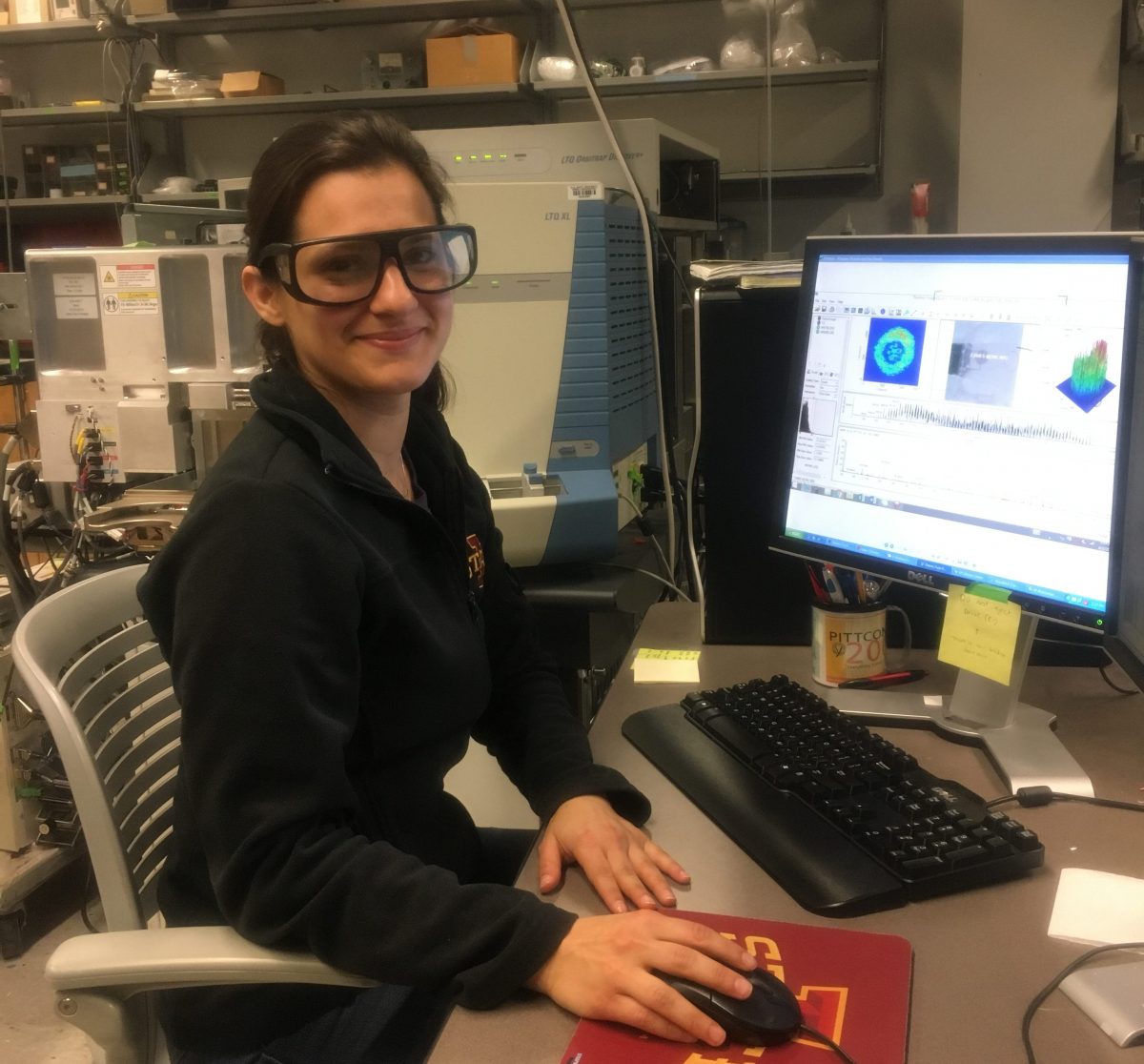
Maria Dueñas received an American Chemical Society Division of Analytical Chemistry Graduate Fellowship for her research in mass spectrometry imaging.
Dueñas, a graduate student in chemistry, is working to enhance the resolution of mass spectrometry imaging. The method combines a microscopy image of a sample, with mass spectrometry, which identifies the molecules within the sample.
“She is a promising future scientist and scholar, and greatly contributed in developing and applying mass spectrometry imaging technology in single cell and subcellular level high-spatial resolution,” said Young-Jin Lee, associate professor of chemistry and adviser of Dueñas. “She already published six papers and is expected to be authored in four more by the time she finishes her PhD.”
The fellowship is designed to encourage basic research, promote growth of the field and recognize future leaders in analytical chemistry.
Dueñas’ work improves the ability of scientists both to see what is in a sample as well as where in the sample it is located, which is especially useful for studying the metabolism of organisms.
“To study the metabolism of living organisms scientists usually grind their tissues and analyze it to see what compounds are present,” Dueñas said. “With that you lose spatial information because you’re grinding all the materials. With this technology, you’re able to keep the spatial resolution.”
The imaging works by collecting a mass spectra using a laser at individual locations, then using computer software to generate an overall image. This can be done on any flat sample. A 3-D sample can also be created by combining many flat samples together.
Her research enhanced the resolution of the image from mass spectrometry imaging down to 5 microns/pixel. Typical current resolution is 20-100 microns/pixel. This enhancement allows scientists to see the compounds in individual cells, which is especially useful when precise information can enhance the study of the metabolism of an organism.
She is also researching how to enhance the ability to view less abundant compounds using this method. Currently the method works well for the most abundant compounds in a sample, but Dueñas is testing how to focus on the less common compounds so that all metabolites could be identified.
“We want to know how an organism functions, so in order to know that we need to go back to the basics and understand what compounds are present,” she said.